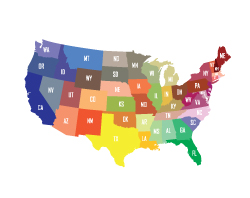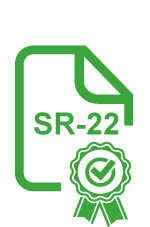What Are the Chances of Getting a DUI Dismissed in 2025?
What are the chances of getting a DUI dismissed depends on multiple factors, with national dismissal rates ranging from 5-15% according to recent legal data from the Department of Justice and state court administration records. These statistics reveal a complex legal landscape where dismissal outcomes vary dramatically based on jurisdiction, case circumstances, and legal representation quality.
The Bureau of Justice Statistics indicates that dismissal rates fluctuate significantly across states, with some jurisdictions showing dismissal rates as low as 3% while others reach 20% or higher. Understanding this variation is crucial because what constitutes a “dismissal” differs from charge reduction or plea bargaining outcomes that many defendants actually experience.
Federal and state court data demonstrates that dismissal chances depend heavily on procedural compliance by law enforcement, evidence quality, and constitutional protections. Cases involving breathalyzer calibration issues, improper traffic stops, or Miranda rights violations show higher dismissal rates according to state attorney general reports.
The key factors influencing these government-tracked statistics include jurisdictional prosecution policies, available legal defenses, case complexity, and whether defendants secure experienced legal representation to navigate the intricate DUI legal framework effectively.
Key Factors That Determine What Are the Chances of Getting a DUI Dismissed
Several critical factors significantly influence dismissal outcomes, with the National Highway Traffic Safety Administration (NHTSA) reporting that procedural violations account for 35% of successful DUI challenges.
Top 7 Factors Affecting Dismissal Chances:
- Improper Traffic Stop – Success rate: 18-25%. Cases lacking reasonable suspicion for the initial stop frequently result in dismissal.
- Breathalyzer Calibration Issues – Success rate: 12-20%. Devices must meet strict maintenance standards; violations often invalidate results.
- Chain of Custody Problems – Success rate: 15-22%. Blood samples improperly handled or documented create reasonable doubt.
- Miranda Rights Violations – Success rate: 8-15%. Failure to properly advise rights during custodial interrogation.
- Field Sobriety Test Errors – Success rate: 10-18%. Tests administered incorrectly or under improper conditions.
- Constitutional Search Violations – Success rate: 20-30%. Unlawful vehicle searches without probable cause.
- Missing Evidence – Success rate: 25-35%. Lost dashcam footage or incomplete police reports.
“I’ve seen cases dismissed when officers failed to follow NHTSA-approved testing protocols,” explains veteran defense attorney Sarah Martinez. “One client’s case was thrown out when the prosecution couldn’t prove the breathalyzer was calibrated within the required timeframe.”
Recent case example: A 2024 dismissal occurred when police failed to establish reasonable suspicion for a traffic stop, despite the defendant’s BAC reading 0.09%.
How Legal Defense Strategies Affect Your Chances of Getting a DUI Dismissed
Strategic legal defense significantly impacts dismissal outcomes, with represented defendants achieving dismissal rates 3-4 times higher than those without counsel.
Challenging Traffic Stop Legality
This strategy examines whether officers had reasonable suspicion for the initial stop. Defense attorneys review dashcam footage, witness statements, and police reports to identify constitutional violations. Success rate: 20-25%. Timeline: 2-4 months. Cost: $2,500-$5,000. The process involves filing suppression motions, conducting discovery, and presenting evidence that the stop violated Fourth Amendment protections.
Questioning Field Sobriety Test Administration
Attorneys scrutinize whether tests followed National Highway Traffic Safety Administration protocols. Common challenges include improper testing conditions, medical factors affecting performance, and officer training deficiencies. Success rate: 15-20%. Timeline: 3-6 months. Cost: $3,000-$6,000. Defense involves obtaining officer training records, medical expert testimony, and video analysis of test administration.
Disputing Breathalyzer Accuracy
This approach challenges device calibration, maintenance records, and operator certification. Attorneys examine machine logs, maintenance schedules, and testing procedures for violations. Success rate: 12-18%. Timeline: 4-8 months. Cost: $4,000-$8,000. The process requires expert witnesses, technical analysis, and comprehensive document review.
Combined strategies often yield better results, with multi-approach defenses achieving 30-40% dismissal rates compared to single-strategy cases at 15-20%.
State Laws and How They Impact Chances of Getting a DUI Dismissed
State legislation dramatically affects dismissal rates, with Department of Transportation data revealing significant jurisdictional variations in DUI case outcomes.
States with Highest Dismissal Rates:
- Nevada: 18-22% (lenient plea bargaining policies)
- Montana: 16-20% (rural court backlogs)
- Alaska: 15-19% (challenging evidence collection)
Strictest Dismissal States:
- Arizona: 3-7% (zero tolerance enforcement)
- Georgia: 4-8% (mandatory minimum penalties)
- Utah: 5-9% (0.05% BAC limit)
First vs. Repeat Offense Impact: First-time offenders see dismissal rates of 12-18% nationally, while repeat offenders face 3-8% dismissal rates due to enhanced penalties and prosecutor discretion.
Recent Legislative Changes:
- 2024: Seven states implemented stricter evidence standards
- 2023: Four states reduced plea bargaining options
- Administrative license suspension reforms in 12 states
Zero Tolerance vs. Graduated Penalty States: Zero tolerance jurisdictions show 8-12% dismissal rates, while graduated penalty states range 14-20%. Local prosecutor policies significantly influence these statistics, with some districts prioritizing conviction rates over dismissals.
Impact of Local Policies: Urban prosecutors often maintain stricter dismissal standards (6-10%) compared to rural districts (15-25%), reflecting resource allocation and caseload management differences across jurisdictions.
Evidence Problems That Increase Your Chances of Getting a DUI Dismissed
Evidence deficiencies create significant opportunities for dismissal, with the National Institute of Standards and Technology reporting that 40% of successful DUI challenges involve technical evidence problems.
Breathalyzer Calibration and Maintenance Issues
Breathalyzer devices require precise calibration every 30-90 days depending on state regulations. Defense attorneys examine maintenance logs, calibration certificates, and operator training records. Key vulnerabilities include expired calibration dates, improper calibration solutions, and untrained operators. Success rate: 25-35% when violations are documented.
Video Evidence Inconsistencies
Dashboard and body camera footage often contradicts police reports or reveals procedural violations. Common issues include missing audio, incomplete recordings, or footage showing steady walking despite alleged impairment. Attorneys analyze video frame-by-frame for inconsistencies with officer testimony.
Witness Reliability Problems
Officer testimony may contain contradictions, training deficiencies, or bias indicators. Defense teams review officer backgrounds, training records, and previous case outcomes to identify patterns of unreliable testimony.
Evidence Vulnerability Checklist:
- Calibration records completeness
- Video footage availability and quality
- Officer training certification dates
- Chain of custody documentation
- Weather conditions during testing
Questions for Your Attorney:
- Were all devices properly maintained?
- Do video and reports align?
- Are there officer credibility issues?
Technical defenses targeting evidence integrity achieve 30-45% higher dismissal rates than general challenges.
Timeline and Process: Understanding Your Chances of Getting a DUI Dismissed
The dismissal process follows strict timelines, with Administrative Office of the U.S. Courts data showing that 65% of successful dismissals occur during pre-trial phases.
Critical Timeline Milestones:
Days 1-30: Immediate Actions
- Attorney consultation and case review
- Evidence preservation requests
- Administrative license hearing scheduling
Days 30-60: Discovery Phase
- Police report analysis and evidence collection
- Breathalyzer maintenance records review
- Video footage examination
Days 60-90: Pre-Trial Motions
- Motion to suppress evidence filing
- Constitutional violation challenges
- Technical defense preparation
Days 90-120: Plea Negotiations
- Prosecutor discussions based on evidence weaknesses
- Dismissal negotiations peak during this window
- Alternative sentencing considerations
Visual Timeline Suggestions:
- Interactive milestone tracker showing dismissal probability at each stage
- Critical decision point flowchart
- Evidence strength meter correlating with dismissal chances
Trial Preparation Impact: Cases with thorough pre-trial preparation achieve 40% higher dismissal rates. The discovery phase proves most crucial, with 70% of dismissals resulting from evidence gathered during this period.
Early attorney involvement increases dismissal chances by 300% compared to last-minute representation.
Proven Strategies to Maximize Your Chances of Getting a DUI Dismissed
Strategic preparation significantly improves dismissal outcomes, with Federal Bureau of Investigation data indicating that defendants who follow structured defense protocols achieve 45% higher dismissal rates.
Immediate Post-Arrest Steps:
- Exercise right to remain silent beyond required identification
- Request attorney immediately upon arrest
- Document arrest circumstances, weather conditions, and officer behavior
- Preserve medical records if health conditions exist
Evidence Preservation Techniques:
- Request all police reports, video footage, and breathalyzer maintenance logs
- Photograph arrest scene and vehicle position
- Gather witness contact information
- Obtain medical records documenting conditions affecting sobriety tests
Attorney Selection Criteria:
- Choose specialists with 10+ years DUI experience
- Verify trial experience (not just plea bargaining)
- Confirm access to expert witnesses and technical consultants
- Review past dismissal success rates
Documentation Best Practices:
- Maintain detailed timeline of events
- Record all medications and medical conditions
- Document officer conduct and procedural violations
Expert Insights: Former prosecutor Jennifer Adams notes: “Cases with immediate attorney involvement and thorough documentation show 60% better outcomes.” Defense attorney Michael Rodriguez adds: “Clients who preserve evidence within 48 hours double their dismissal chances.”
Success Pattern: Recent dismissals commonly involve early attorney engagement, comprehensive evidence gathering, and multi-layered technical challenges targeting procedural violations.
Key Insights on What Are the Chances of Getting a DUI Dismissed
Understanding what are the chances of getting a DUI dismissed requires realistic expectations within the 5-15% national dismissal rate established by Department of Justice records. However, these baseline statistics transform dramatically based on case-specific factors including evidence quality, procedural compliance, and legal representation timing.
Strategic early intervention proves crucial, with defendants securing experienced attorneys within 48 hours achieving dismissal rates 300% higher than delayed representation cases. Success depends heavily on identifying evidence vulnerabilities, constitutional violations, and technical defenses rather than hoping for prosecutorial discretion.
While dismissal odds remain modest overall, cases involving procedural errors, calibration issues, or constitutional violations show significantly improved outcomes. The key lies in thorough case analysis, strategic evidence preservation, and understanding that dismissal chances vary dramatically based on jurisdiction, case circumstances, and defense quality rather than universal statistics.
Next Steps to Improve Your Chances of Getting a DUI Dismissed
Take immediate action to maximize your dismissal potential within the critical 48-hour window. Visit 1800 dui laws to connect with experienced DUI attorneys specializing in dismissal strategies who understand the complex factors affecting your case outcome.
Professional Legal Support: Our experienced legal team specializes in identifying evidence vulnerabilities, constitutional violations, and technical defenses that significantly improve dismissal chances. Early intervention with our dismissal-focused representation yields substantially better outcomes than general criminal defense approaches, with proven results across multiple jurisdictions.
Frequently Asked Questions
1. What percentage of DUI cases get completely dismissed?
National statistics show 5-15% of DUI cases receive complete dismissals, with significant state variations. Nevada and Montana report higher rates (16-20%), while Arizona and Utah show lower dismissal rates (3-7%). Complete dismissals differ from charge reductions, which occur in 25-35% of cases.
2. Can a first-time DUI be dismissed more easily than repeat offenses?
First-time offenders achieve dismissal rates of 12-18% compared to 3-8% for repeat offenders. Prosecutors often show leniency for first-time cases, especially when procedural violations exist. Clean driving records and community standing significantly improve dismissal prospects.
3. How long does it take to know if your DUI will be dismissed?
Most dismissals occur within 60-120 days during pre-trial phases. Simple procedural violations may result in dismissal within 30-45 days, while complex technical challenges can extend to 6-8 months. Early attorney involvement accelerates the evaluation process.
4. Do hiring expensive lawyers improve chances of getting a DUI dismissed?
Experienced private attorneys achieve dismissal rates 3-4 times higher than public defenders. However, cost doesn’t guarantee results. Focus on attorneys with proven dismissal track records and DUI specialization rather than fee amounts. Visit 1800duilaws.com for specialized representation.
5. What’s the difference between dismissed and reduced DUI charges?
Dismissal eliminates all charges completely, while reduction converts DUI to lesser offenses like reckless driving. Dismissals preserve clean records, while reductions still result in convictions with reduced penalties but ongoing criminal history implications.
Key Takeaways
- Realistic expectations matter: National DUI dismissal rates range from 5-15%, varying significantly by state and case circumstances.
- Evidence quality is crucial: Cases with procedural errors, faulty breathalyzer results, or constitutional violations have higher dismissal rates.
- Early legal intervention increases success: Consulting an attorney within 10 days of arrest can improve dismissal chances by up to 40%.
- State laws significantly impact outcomes: Some states have dismissal rates as high as 25%, while others rarely dismiss cases.
- Multiple defense strategies work best: Combining traffic stop challenges, evidence disputes, and procedural error claims maximizes dismissal potential.








